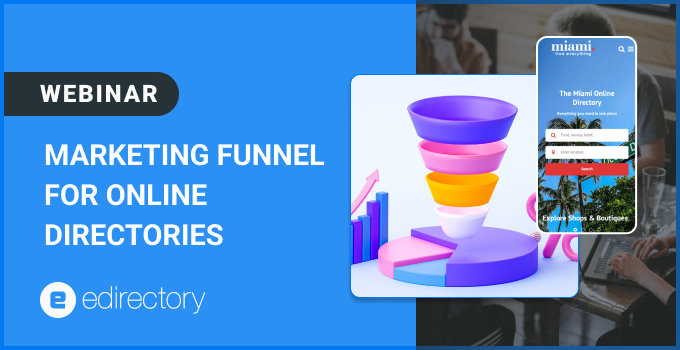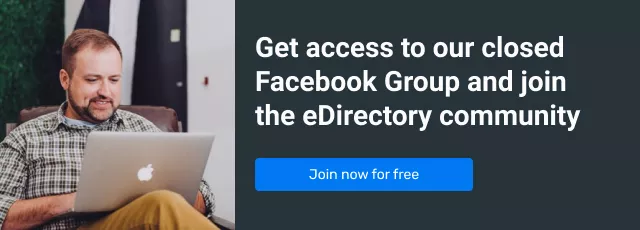Yesterday, we hosted an insightful webinar titled “Marketing Funnels for Online Directories,” where we delved deep into this powerful concept, offering actionable strategies to help directory owners drive traffic, convert visitors, and ultimately grow their business.
What is a Marketing Funnel?
At its core, a marketing funnel is a strategic model that maps out the customer journey from the first contact with your project to the final sale. It’s one of the most essential content-marketing concepts, guiding how to move potential customers from awareness to decision-making, ensuring that your online directory not only attracts visitors but also converts them into paying customers.
The Three Stages of the Marketing Funnel
We broke down the marketing funnel into three key stages during the webinar:
- Top of Funnel (ToF): Awareness Stage
- This is where potential customers first learn about your online directory. At this stage, they might not have been aware of your website or its advantages.
- Middle of Funnel (MoF): Consideration Stage
- Here, your audience begins to recognize your website as a potential solution to their needs. They start considering your directory as a viable option.
- Bottom of Funnel (BoF): Decision Stage
- At this final stage, your leads are ready to make a purchase decision. Your goal is to convert these leads into customers.
Each of these stages requires specific content tailored to engage your audience and drive them further down the funnel, from awareness to conversion.
Creating a Marketing Funnel for Your Online Directory
1. Journey Mapping
Understanding your customer’s journey is the first step in optimizing your marketing funnel. If your directory already has a considerable user base, mapping the journey involves gathering insights from your best customers. Ask them about their profile, concerns, ambitions, and reasons for choosing your directory. If you’re just starting out, engage with as many potential customers as possible to uncover the same insights.
2. Content Planning
Once you’ve mapped the customer journey, the next step is content planning. Your content strategy should be meticulously designed to guide your customers through each stage of the funnel. The content needs to evolve from informative and broad at the top of the funnel to more specific and persuasive as you move toward the bottom.
Types of Content for Each Funnel Stage
1. Top-of-Funnel Content
Content at this stage should aim to make your audience aware of how your directory can solve their problems. Ideal topics include:
- The role of digital marketing in attracting new customers within your niche.
- Strategies to diversify exposure channels and increase visibility.
- The difference between a qualified audience and a mass audience in your niche.
2. Middle-of-Funnel Content
In the middle of the funnel, your content should be more informative, presenting your directory as a solution without being overtly promotional. Suggested topics include:
- The benefits of advertising in a feature-rich directory.
- How your directory compares favorably to competitors.
- Success stories from satisfied clients.
3. Bottom-of-Funnel Content
Finally, at the bottom of the funnel, your content should focus on closing the deal. Start with informative materials about your services, such as a media kit, and lead into a compelling offer. Examples of effective content include:
- A media kit highlighting key metrics like site traffic and social media stats.
- Testimonials from satisfied clients.
- A landing page featuring an irresistible offer.
Webinar: Marketing Funnels for Online Directories
Maximizing the Impact of Your Content
Once your content is ready, it’s time to maximize its reach:
- Share your content across social media platforms.
- Highlight it on key pages of your directory, such as the advertising and contact pages.
- Consider investing in paid traffic through Google Ads or social media ads.
Leveraging Organic and Paid Traffic
For organic traffic, use internal links to keep visitors engaged and guide them to the next stage of the funnel. Adding a lead form widget to your blog posts and incorporating a chat feature for instant communication can also enhance engagement.
For paid traffic, utilize segmented audiences to target specific groups of site visitors. This targeted approach ensures that the right content reaches the right audience at the right time, driving conversions and feeding your marketing funnel effectively.
Conclusion
Building a robust marketing funnel is essential for the success of your online directory. By understanding your customers’ journey and tailoring content for each stage of the funnel, you can significantly increase your chances of converting visitors into loyal customers. We hope the strategies shared in our webinar empower you to optimize your marketing efforts and achieve your business goals.
DOWNLOAD THE MATERIAL DISCUSSED IN THE WEBINAR:
- Presentation deck (.pdf)
- Content Marketing Strategies for Online Directories
- Webinar: AI Prompts For Content Marketing Success
- Webinar: AI for SEO and Content Marketing in Online Directories
This session was recorded on August 28th, 2024.
- Don’t forget to register for eDirectory’s next Webinar.
- Do you want to know what eDirectory can do for you? Sign up for a free guided Demo here.
Want more tips? Shoot us a note at marketing@eDirectory.com and don’t forget to join our Facebook group.



